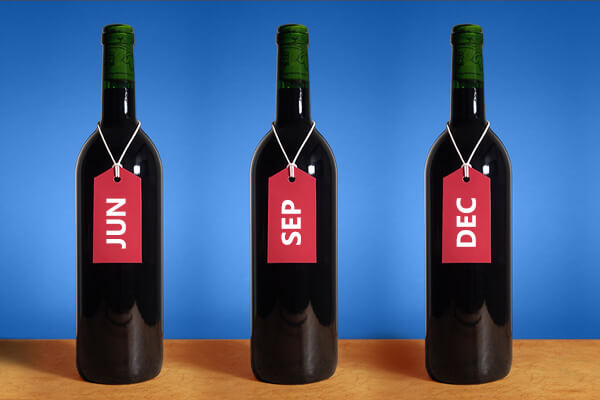How to Improve Your Distributor Sales Quarterly Business Reviews (QBRs) in 3 Easy Steps
When a business review is put on the calendar with your distributor, the agenda should cover pricing strategies, new products, and future promotions. Unfortunately, more often than not, your distributor comes to the meeting with AP questions, and 75% of the time is spent talking about outstanding invoices instead. Distributors want their invoices paid, but now you need to ensure that those invoices are accurate. Now your meeting is stuck in a loop of going through and tracking down billbacks while trying to get a hold of finance.
Those QBR frustrations can all come down to three assumptions made going into these unnecessarily “dreaded” meetings:
- You assume the distributor will keep track of the invoices – Since distributors work with dozens, if not hundreds, of other companies and each of those companies have their own set of promotions, they aren’t really able to stay on top of accurate invoicing. The flow of information from the distributor to the supplier and back to the distributor can quickly become problematic.
- You assume your finance team has already taken care of it – Billback invoices can’t be paid just like a regular utility bill. Each one needs to be checked and verified against the agreement, and in many cases, those live in a myriad of places and inconsistent formats (bar napkins, Excel spreadsheets, post-it notes). If your sales and finance teams aren’t storing data and working in the same system, or if there is any communication breakdown, the information is error-prone, the process is time-consuming, and the invoice stalls in the “system.”
- You assume tracking the pricing is good enough – You need to track both the pricing and the claims. Having an agreed-upon pricing model is great, but the invoices come from the claims. For example, if there are claims that didn’t get shut off by mistake, the claims aren’t being tracked properly, and chances are you’re getting over-invoiced on the billbacks. This is essentially money flying out the door.
With assumptions like these, the time allotted for your QBR can be quickly taken up with questions about invoicing, leaving a list of follow-up tasks and only minimal time to cover product lines and discuss new promotions. Not to mention any time spent (read: wasted) with post-QBR follow-up is less time you’re spending creating new sales.
Fix 1 – Don’t Rely on your distributor to track depletion allowances – Take control of the deals invoiced by using TRUE data, not expected or presumed numbers solely from third-party depletion data that can’t be fully validated. Verify that your price and promotion commitments agree with the chargebacks and invoice adjustments you’re receiving from the distributor with 100% coverage on distributors, marketing, and promotions, including all incentives and expenditures. When you have the system in place to track and verify this automatically and seamlessly, you come to the QBR with all the answers, and you won’t need to be frantically phoning finance.
Fix 2 – Utilize promotions planning – Believe it or not, sales can be empowered to track all existing promotions, plan profitable promotional models, and automate pricing approvals directly in the QBR meeting. By leveraging a centralized, full-cycle promotions management solution, you can bring finance, sales, and IT teams together to drive price cohesion and processing—on the fly. Not only will the sales team come to the QBR prepared to answer any status questions, but finance will also be freed from the tedious, lengthy task of data gathering and hunting to approve your promotions. IT will no longer be the bottleneck in facilitating complex reports and custom add-ins that enable the software communication necessary to determine predicted efficacy and margin of a proposed trade plan.
Fix 3 – Have accurate program performance at your fingertips – With a dashboard full of accurate reports that are accessible anywhere, sales can be equipped to find out how much is being spent on by-the-glass programs, incentives, samples, etc. Drill down further to track claims by discount brackets, regions, states, and even specific retail locations. From there, adapt and optimize your programs to become the top choice of your distributor.
By using a trade spend management platform, everyone in your business can work from a single source of the truth through the entire pricing and promotion process that will drastically increase the value and the purpose of distributor QBRs.
Giving sales the tools to have the information they need to answer any questions about what’s cleared, what’s still open, and what’s been paid before the QBR starts is the key to leveraging these important meetings for building outcomes that continually improve over time.
Once the QBR shifts from worrying about AP to a true business review, you’re left with more time to develop a healthy relationship with your distributor based on accurate data and valuable communication. Build your agenda with strategy at the forefront and use QBRs as the time to make decisions to move your program forward into the next quarter.
Focus on what’s working well with your current pricing strategies and promotions, celebrate those wins and then identify gaps or opportunities for improvement and agree on an action plan complete with measurable goals.
Talk about any new promotions or upcoming closeouts and provide any necessary training for new products. Use this newly found additional time to brainstorm, develop promotion test markets, and talk about any other pain points or obstacles your distributor might be experiencing so you can clear it for them.
Your distributors will leave the meetings more educated about your products, on board with your strategies, and better-equipped to sell more, which helps them become the extension of brand ambassadorship you want them to be.

